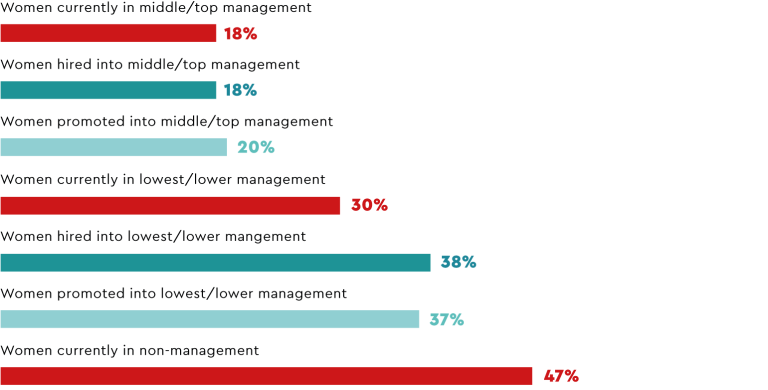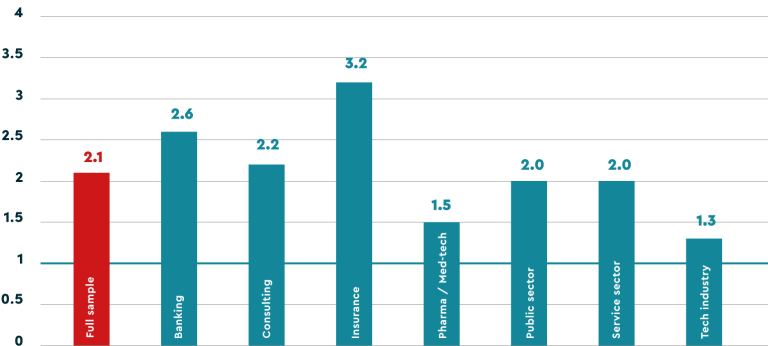In the Banking sector it is particularly evident that the higher the management position, the lower the percentage of female managers. The distribution of female and male managers is more balanced at the lowest management level. However, men predominate from the lower management level upwards. Clearly, the Banking sector needs to improve when it comes to utilizing the potential of female talents.
Last year’s overall positive trend of women entering management positions through both recruitment or promotion continues. Here, too, the share of women tapers off the higher the management level. Almost 40% of positions are awarded to women at the lowest and lower management levels. However, only one in five positions go to women in the middle and top management. This means a 20% percentage gap in recruitment and promotions between junior and senior management (i.e., lowest/lower and middle/top management levels).
Interestingly, the percentage of women who enter management through recruitment is almost identical to that of women who enter due to promotions at all management levels. Yet, at no level do banks and financial organizations make anywhere near full use of their female talent pipeline. Much must be done in recruiting, developing, and promoting women into managerial positions.

It is evident from the Banking industry Glass Ceiling Index of 2.6 that women face significant obstacles to reach middle and top management positions in this sector. It is the second highest GCI of any industry.

In the Banking industry, there is a clear difference in employment percentages between men and women at all levels except for top management, where full-time work is the norm for everybody. As the gap narrows with each management level, women still face a disadvantage in reaching top management roles. This may be due to the expectation of full-time work, even though women are more likely than men to work part-time at some point (and thus are likely expected to increase their work percentage. See the “Key Figures” section for further information on differences in part-time/full-time employment between men and women across different age groups.